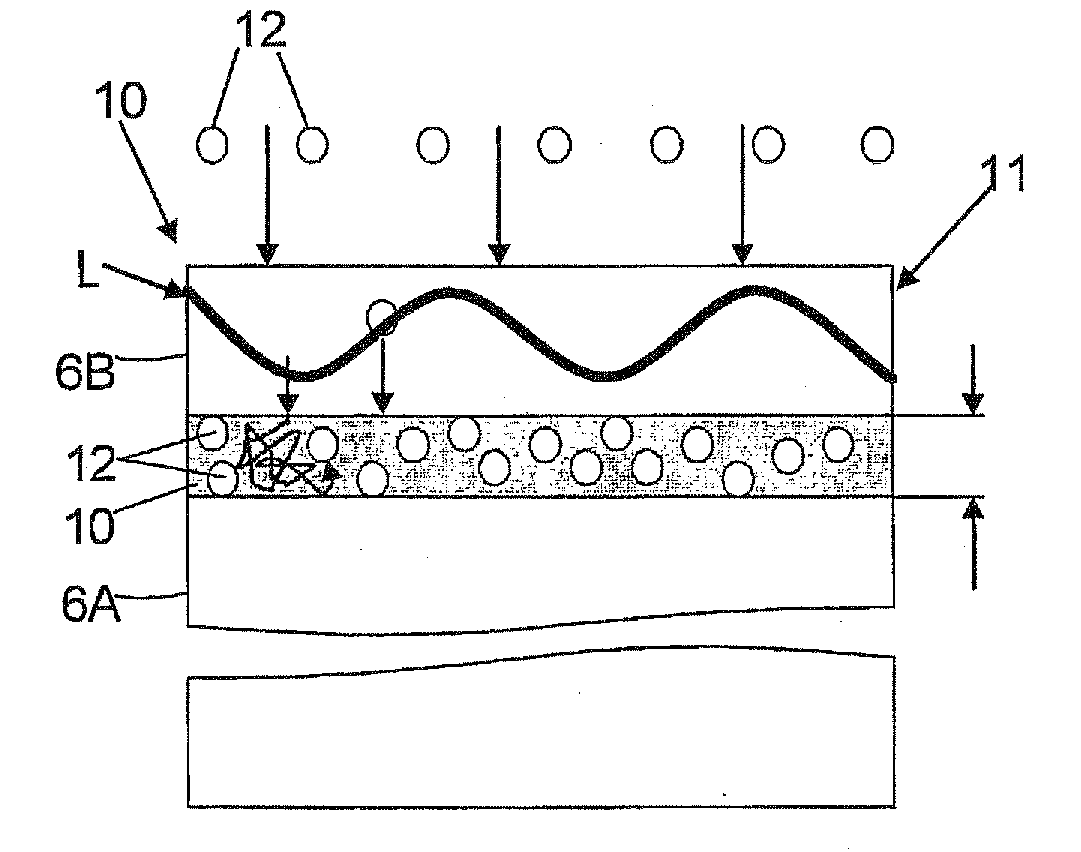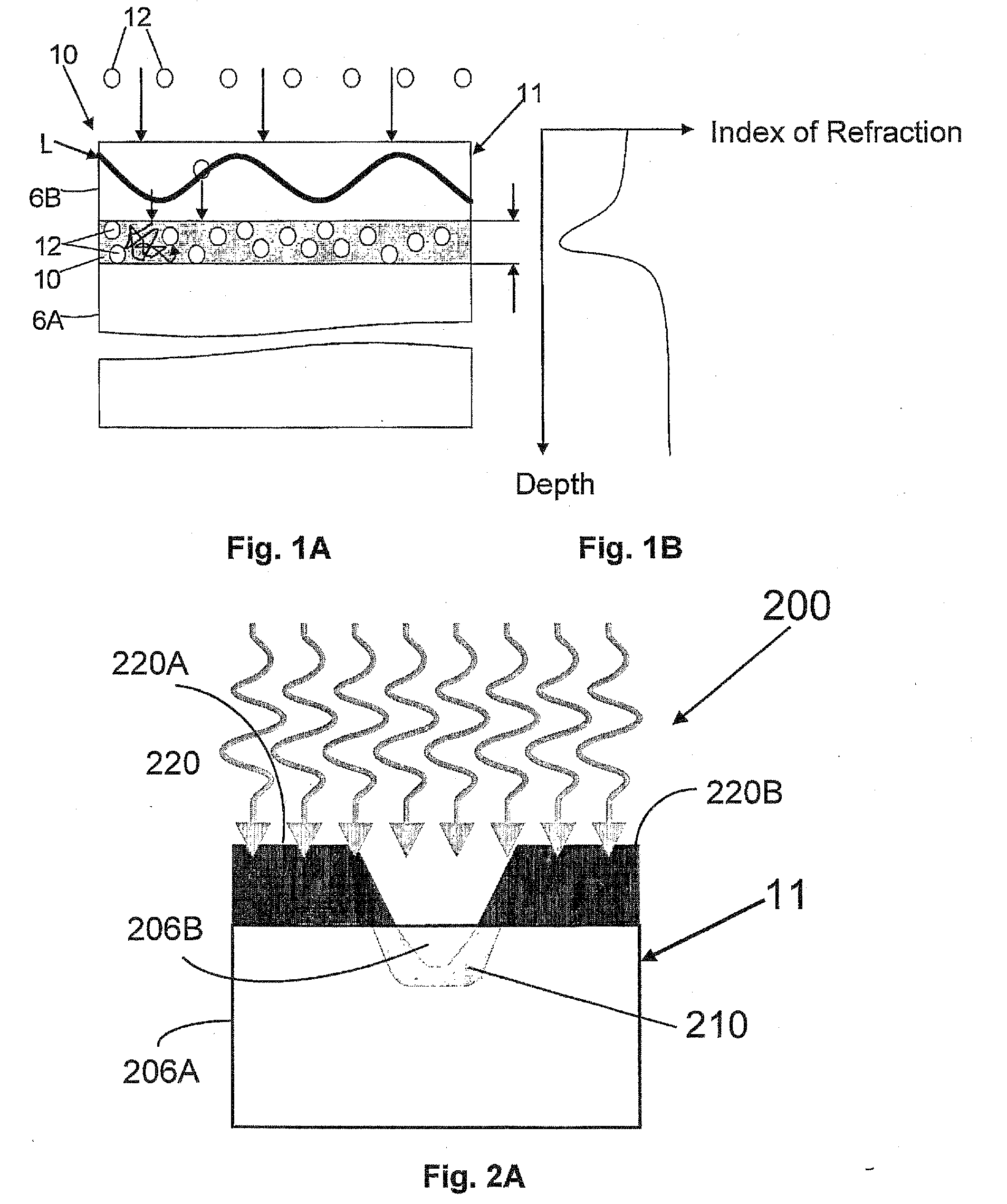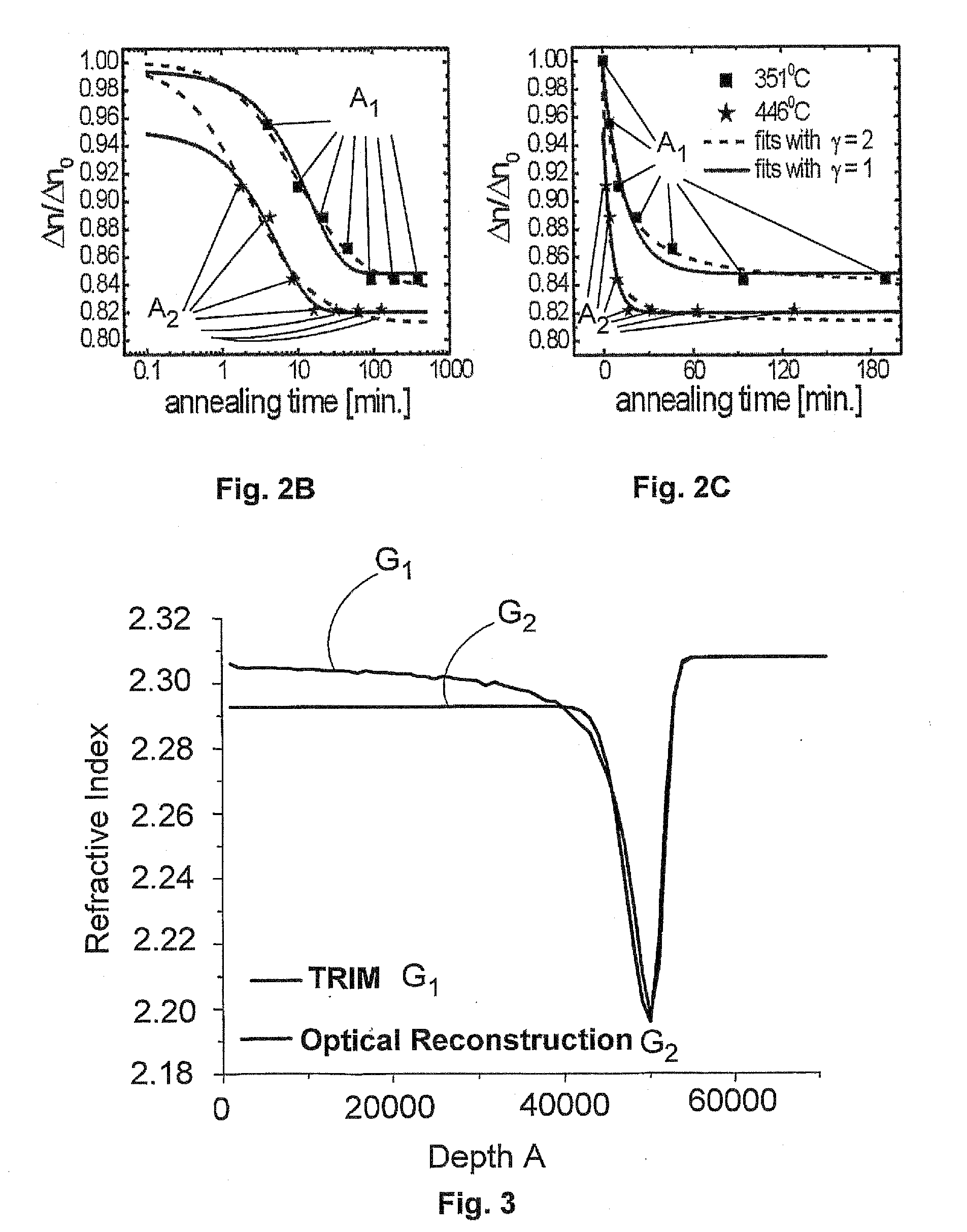Electro-Optic Crystal-Based Structures and Method of Their Fabrication
a technology of electrooptic crystals and crystal structures, applied in the field of optical and electrooptical devices, can solve problems such as not expected to manifest gradual deterioration in performance, and achieve the effects of low refractive index, high optical quality, and index of refraction
- Summary
- Abstract
- Description
- Claims
- Application Information
AI Technical Summary
Benefits of technology
Problems solved by technology
Method used
Image
Examples
Embodiment Construction
[0056]Referring to FIG. 1A, there is shown an example of an optical structure 100 of the present invention for use in optic and electro-optic devices. Structure 100 includes a region 10 of an amorphous KLTN-based material, enclosed between lower and upper regions 6A and 6B of a crystalline KLTN-based material 11. In the present example, amorphous region 10 and crystalline region 6B are designed to have refractive indices and thicknesses enabling effective waveguiding propagation) of a beam L of some light wavelength(s) and polarization(s) along region 6B. Amorphous region 10 presents a boundary (cladding) defining a waveguide region 6B enclosed between said cladding and the upper surface of structure 100 serving as the opposite boundary.
[0057]Amorphous region 10 is formed by implantation of light ions, generally at 12, into the KLTN substrate 11. Regions (layers) 6A and 6B are portions of the substrate separated by layer 10 resulted from the implantation. Interfaces between layers 6...
PUM
| Property | Measurement | Unit |
|---|---|---|
| electric field | aaaaa | aaaaa |
| feature size | aaaaa | aaaaa |
| width | aaaaa | aaaaa |
Abstract
Description
Claims
Application Information
 Login to View More
Login to View More - R&D
- Intellectual Property
- Life Sciences
- Materials
- Tech Scout
- Unparalleled Data Quality
- Higher Quality Content
- 60% Fewer Hallucinations
Browse by: Latest US Patents, China's latest patents, Technical Efficacy Thesaurus, Application Domain, Technology Topic, Popular Technical Reports.
© 2025 PatSnap. All rights reserved.Legal|Privacy policy|Modern Slavery Act Transparency Statement|Sitemap|About US| Contact US: help@patsnap.com



